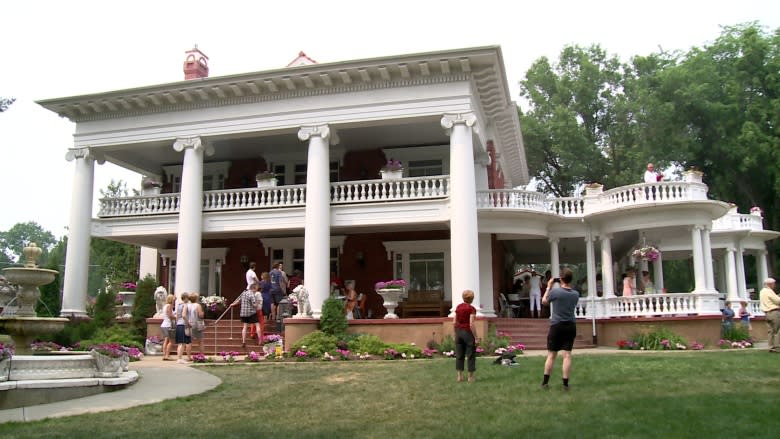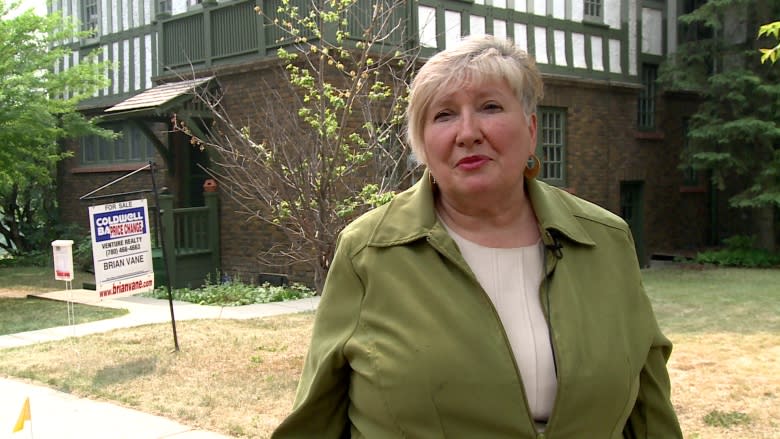Magrath Mansion open house highlights Edmonton's historical gems
Visitors got a rare chance this weekend to pass through the white ionic columns that guard the Magrath Mansion, past the wide glass doors to explore the 14 rooms of the Edmonton landmark.
The massive, three-storey mansion has stood overlooking the river valley, in Highlands, since it was built by developer William Magrath in 1912.
But more remarkable than the mansion's large veranda or restored parquet floors floors is the fact that it exists at all.
Like many of Alberta's historic properties, it was nearly lost to neglect until purchased by Sid Braaksma in 2001 for $750,000. It was an odd purchase for a businessman who bought his car used and says he "never spent a penny on fancy stuff."
However, Braaksma's wife, who often walked by the mansion, was worried about its fate.
"My wife wanted this house saved,"
"I told her, 'Yeah, that's okay. I don't want to buy it. It's too much work, I've already got too much work."
Braaksma did buy the house. And he did put in the work to restore it to its former glory. History enthusiasts got a chance to see the results of his labour at an open house at the mansion Sunday, part of the Edmonton and District Historical Society's Doors Open festival.
The festival, which wrapped up this weekend, gave people a peek inside the city's historical treasures, poking around Edmonton's storied churches, hotels and other buildings.
Braaksma said he opened the doors to the mansion in the hopes of inspiring more to people to appreciate Edmonton's architectural history — and to inspire them to save what remains.
"In Europe, they last 10,000 years. Here, we're knocking them down when they're 25 years old," he said.
Edmonton's city council has said it needs to do more to save Edmonton's historic buildings. Earlier this week, councillors debated several options to keep the city's landmarks standing — they include the possibility of designating buildings as historical properties against the will of property owners, with compensation.
Currently, buildings owners can request to have their properties listed as historical resources, which allows them to apply for maintenance grants and other financial incentives.
But it also means the building can't be demolished and that it must be kept "in fair condition." It also limits the kinds of modifications that can be done to the structure. Since the system is voluntary, many owners don't bother and buildings remain unprotected.
'We don't tell those stories'
Such is the case with The Villa. The three-storey, Tudor-style brick home was built in Groat Estates by former MLA James Cornwall in 1910-11.
The Villa was more than just a home, according to Shirley Lowe, the city's former historian laureate. It also contained a "negotiation room," where Cornwall would meet with entrepreneurs, military officers and First Nations groups from northern Alberta.
"It's an incredible house. And it needs somebody who will love it, and someone who will be proud of it," Lowe said.
While the current owners of The Villa have taken care of the home, it is now on the market. Since it was never added to the city's registry, Lowe worries what might happen to it under new owners. The large lot it sits on could fit two, even three, smaller homes if The Villa was demolished.
Doing so might make some money, but Lowe said it would mean losing a key piece of Edmonton's history — an irreplaceable loss for what she calls "a city of newcomers".
"We don't tell those stories. We don't know who Jim Cornwall was and the value of that," she said.
"In another country, this house would be in its infancy. It is built to last for hundreds of years."
She is urging both city council and property developers to do more to preserve Edmonton's historical gems.
"We need to have an identity that we keep and celebrate," she said.
"And these houses they have stories, but not only about this particular house and James Cornwall, but about this area and the beginnings of this city and the people that made it a successful place."



